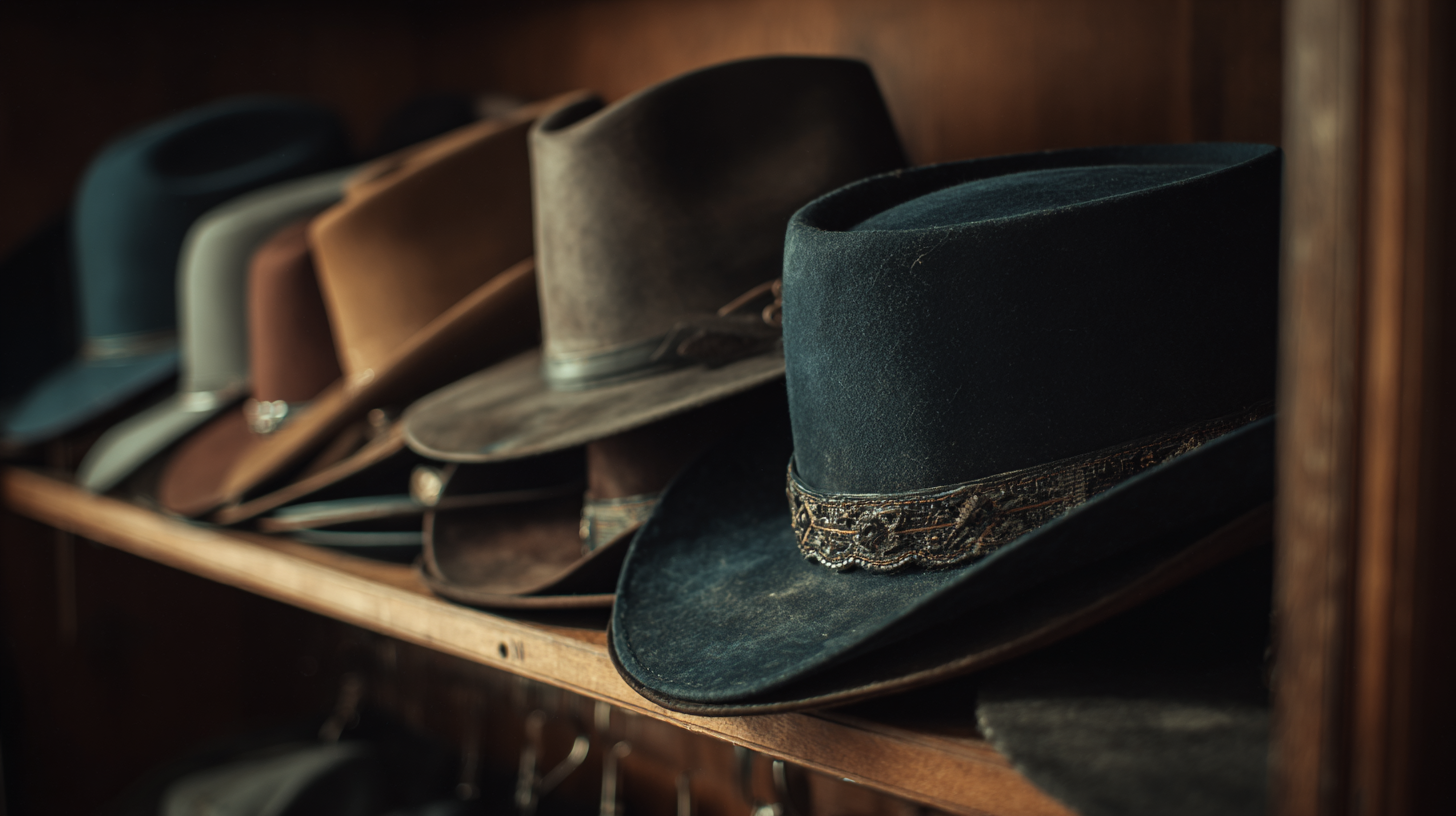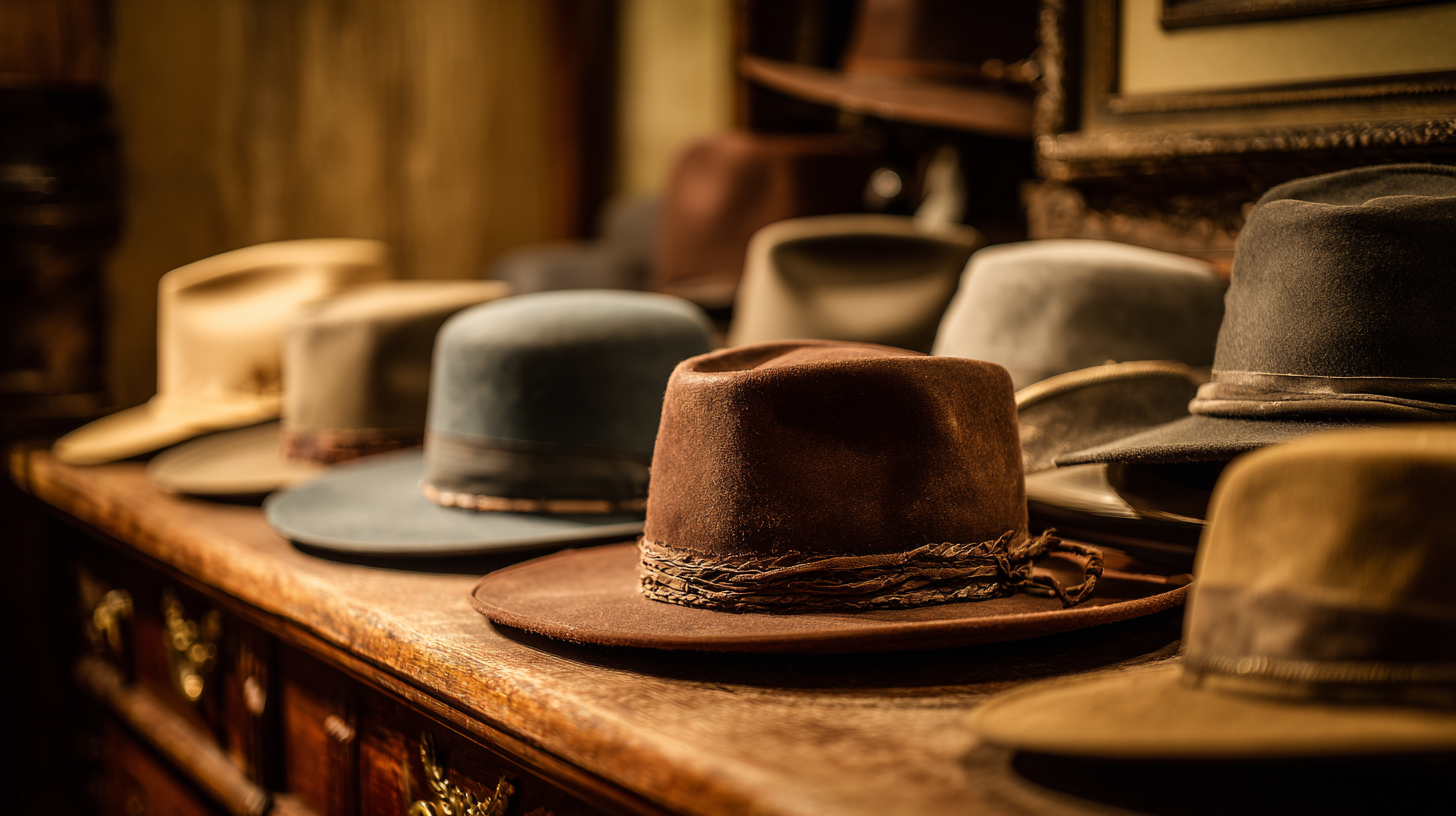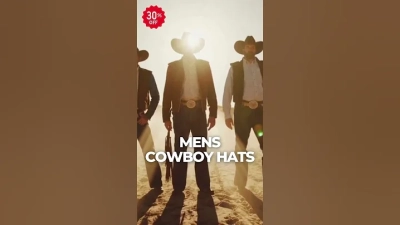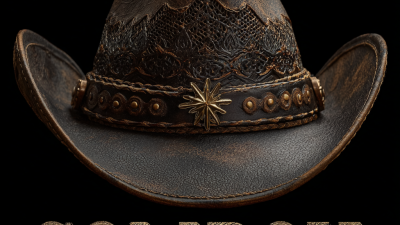Exploring the Rich Heritage of Western Hats: A Deep Dive into Styles and Significance
 The growing fascination with Western hats reflects a rich tapestry of
culture and history, underpinned by both tradition and modern fashion sensibilities. With the Western hat market projected
to reach over $1 billion by 2025, a significant number of enthusiasts are
delving into the styles and significance of these iconic accessories. Western hats, which encompass a variety of designs from
classic cowboy hats to contemporary takes, serve not only as a fashion statement but also as a symbol of identity and heritage.
According to a report by the Fashion Institute of Technology, the resurgence of interest
in vintage styles in the past few years has led to a renewed appreciation for
the craftsmanship involved in creating these hats. This exploration into the diverse styles of Western hats reveals their unique
narratives, connecting wearers to a legacy steeped in the rugged spirit of the American West.
The growing fascination with Western hats reflects a rich tapestry of
culture and history, underpinned by both tradition and modern fashion sensibilities. With the Western hat market projected
to reach over $1 billion by 2025, a significant number of enthusiasts are
delving into the styles and significance of these iconic accessories. Western hats, which encompass a variety of designs from
classic cowboy hats to contemporary takes, serve not only as a fashion statement but also as a symbol of identity and heritage.
According to a report by the Fashion Institute of Technology, the resurgence of interest
in vintage styles in the past few years has led to a renewed appreciation for
the craftsmanship involved in creating these hats. This exploration into the diverse styles of Western hats reveals their unique
narratives, connecting wearers to a legacy steeped in the rugged spirit of the American West.
Understanding the Historical Roots of Western Hats and Their Cultural Significance
Western hats, particularly the iconic cowboy hat, have a rich historical legacy that reflects the diverse cultural fabric of the American West. Initially designed in the 1860s by John B. Stetson, these hats were crafted for practicality, providing protection from the harsh sun and rain experienced during long cattle drives. According to the "American Hat Industry Report 2022," the western hat market has seen a steady growth of 4% annually, indicating a sustained popularity not only among cowboys but also as a fashion statement in popular culture.
The significance of western hats extends beyond mere utility; they symbolize a way of life rooted in ranching, exploration, and the rugged individualism associated with the American frontier. The "Western Wear Cultural Impact Study 2023" highlights that over 70% of consumers consider western hats an essential part of their identity, illustrating how these hats resonate with themes of independence and tradition. Furthermore, various styles, such as the wide-brimmed Stetson or the classic Resistol, reflect regional differences and personal expressions, embodying the heritage of the communities that create and wear them. As western hats continue to evolve, their historical roots remain a poignant reminder of the cultural significance they hold.
Exploring the Rich Heritage of Western Hats
This bar chart illustrates the popularity of various Western hat styles based on the number of sales. As seen, the Cowboy Hat remains the most popular, showcasing its cultural significance in Western heritage.
Identifying Various Styles of Western Hats: Characteristics and Features
 Western hats, particularly the iconic cowboy hats, are not just functional accessories; they embody a rich cultural heritage. The two main styles are the wide-brimmed Stetson and the more compact cowboy hat. The Stetson, often characterized by its tall crown and broad brim, is designed to protect wearers from the sun and rain, making it an essential item for ranchers and rodeo competitors. According to a report by the American Hat Makers, over 70% of rodeo participants wear a style of Western hat, underscoring its significance in Western culture.
Western hats, particularly the iconic cowboy hats, are not just functional accessories; they embody a rich cultural heritage. The two main styles are the wide-brimmed Stetson and the more compact cowboy hat. The Stetson, often characterized by its tall crown and broad brim, is designed to protect wearers from the sun and rain, making it an essential item for ranchers and rodeo competitors. According to a report by the American Hat Makers, over 70% of rodeo participants wear a style of Western hat, underscoring its significance in Western culture.
In addition to function, these hats offer a unique expression of style. Variations often include features such as decorative bands, unique crown shapes like the “Gus” or “Cattleman”, and different materials such as felt or straw. Data from the National Western Stock Show indicates that felt hats are preferred in colder areas for their warmth, while straw hats are favored in hotter climates for breathability and comfort. This diversity in style reflects not only personal taste but also the practical needs of people in different environments, further highlighting the importance of Western hats in both fashion and function.
The Role of Western Hats in Cowboy Culture and Modern Fashion Trends
The resurgence of Western hats in contemporary fashion is inextricably linked to the evolving narrative of cowboy culture, particularly highlighted by Beyoncé's "Cowboy Carter" tour. This event has ignited a Western fashion revolution, demonstrating how historical symbols can be interwoven into modern aesthetics. With reports indicating a significant boost in the market for Western-inspired fashion, it's clear that these hats are not merely accessories; they represent a cultural rebirth and a reimagining of identity, particularly among younger generations eager to express individuality through style.
As the Cowboycore trend solidifies its place in 2025, enthusiasts are encouraged to invest in versatile pieces that reflect this ethos. Tips for embracing this trend include pairing classic cowboy hats with contemporary outfits to strike a balance between nostalgia and modernity. Also, consider visiting local shops that specialize in customizing hats, which adds a personal touch to your Western ensemble. Lastly, engaging with the community through events like rodeos can provide both inspiration and a deeper appreciation for the rich heritage these items represent.
The western hat's cultural significance transcends fashion; it embodies resilience, nostalgia, and a connection to America's roots, making it a timeless component of both cowboy culture and today's style landscape. With the intersection of music and fashion, the influence of pop culture on shopping behaviors further highlights the importance of these traditional accessories, making them a must-have for any fashionable wardrobe.
Exploring the Rich Heritage of Western Hats: A Deep Dive into Styles and Significance
| Style | Material | Significance | Modern Trends |
|---|---|---|---|
| Cowboy Hat | Felt or Straw | Symbol of Western Heritage and Identity | Incorporation in Streetwear and High Fashion |
| Stetson | Wool Felt | Tradition and Quality Craftsmanship | Influence in Celebrity Fashion |
| Resistol | Animal Fur | Popular among Rodeo Cowboys | Fashion Statements in Pop Culture |
| Gus Hat | Straw or Felt | Tie to Western Movie Legends | Adoption by Fashion Influencers |
| Felt Hat | Wool Felt or Rabbit Fur | Warmth and Durability for Work and Leisure | Seen in Seasonal Fashion Collections |
Care and Maintenance Tips to Preserve Your Western Hat's Longevity
Taking care of your western hat is essential for preserving its unique style and ensuring its longevity. Start by keeping your hat clean. Use a soft-bristle hat brush to gently remove dust and dirt. For deeper cleaning, a damp cloth can be used to wipe the brim and crown, ensuring you avoid soaking the material. It’s also important to steer clear of harsh chemicals or abrasive materials that could damage the hat’s finish.
In addition to cleaning, proper storage plays a significant role in maintaining your western hat’s shape and structure. Always store your hat upright in a cool, dry place, ideally in a hat box. Avoid hanging it on hooks or placing other items on top, as this can cause unwanted creases or deformities. Regularly reshaping the hat as needed and using a hat stiffener can also help retain its original silhouette, prolonging its life and ensuring it remains a staple in your wardrobe for years to come.
Exploring Iconic Western Hats in Film and Popular Culture: Legends and Symbolism
Western hats have long been emblematic in film and popular culture, representing not just the American frontier spirit but also the ideals of freedom and adventure. The iconic cowboy hat, especially the wide-brimmed Stetson, has transcended its practical origins to become a symbol of rugged individualism and heroism. According to a recent report by the American Hat Makers Association, the Western hat market has seen a 15% annual growth due to increased popularity in both fashion and film industries, showcasing the enduring allure of these styles.

In films, hats like those worn by John Wayne or Clint Eastwood have become synonymous with their iconic characters, reinforcing the mythology of the American West. This symbolism is often reflected in fashion trends as well—many contemporary Western-themed events and festivals showcase a revival of these hats, bridging the gap between past and present. It's essential to recognize the cultural significance of these hats, as they resonate with themes of bravery and resilience.
Tips: When choosing a Western hat, consider the shape and size that best complements your face shape. A classic felt hat can add a timeless touch to your outfit, while straw hats are perfect for warmer climates. Embrace the versatility of these hats by pairing them with both casual and more formal attire to elevate your look.
Related Posts
-

What Are the Latest Trends in Western Hats for Global Buyers
-

Finding Top Suppliers for the Best Cowboy Hats: The Ultimate Guide to Quality and Value
-

How to Choose the Perfect Felt Hat for Men Based on Style and Occasion
-

Understanding the Common Issues Faced by Consumers Choosing Mens Felt Hats
-

7 Reasons Why the Brown Felt Cowboy Hat Is Your Must Have Accessory
-

Top Strategies for Boosting Sales of Mens Hats in a Competitive Market
